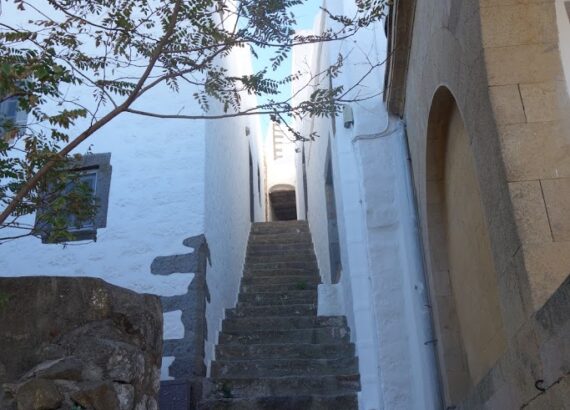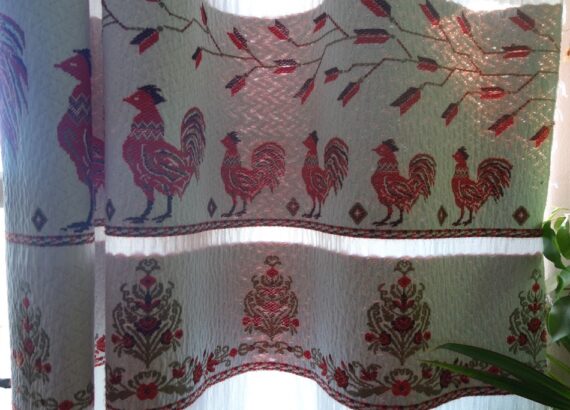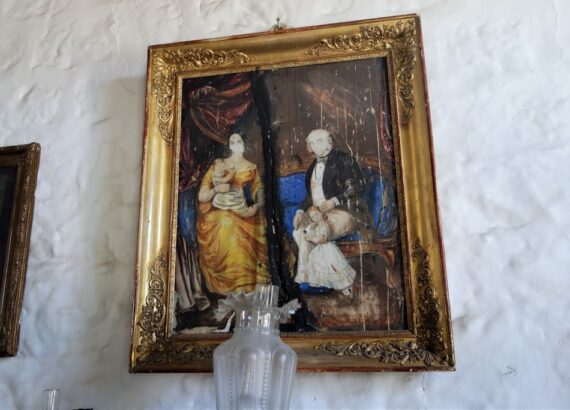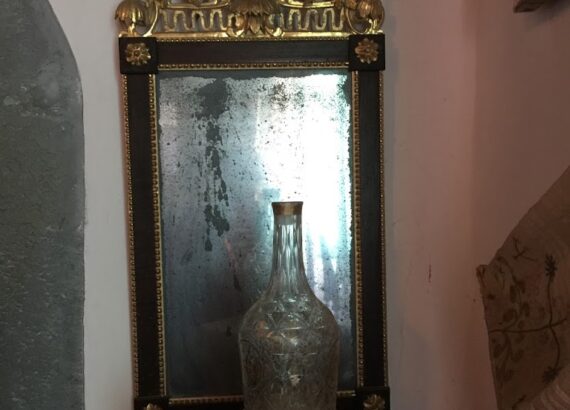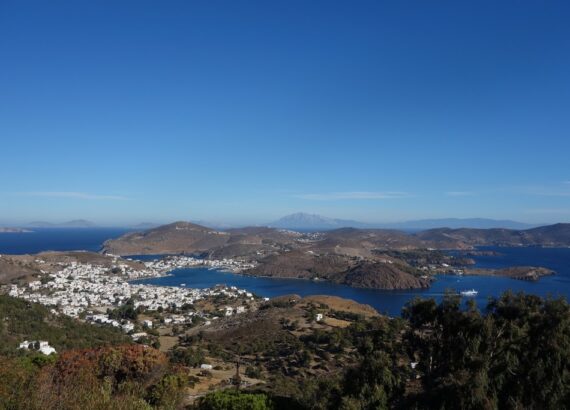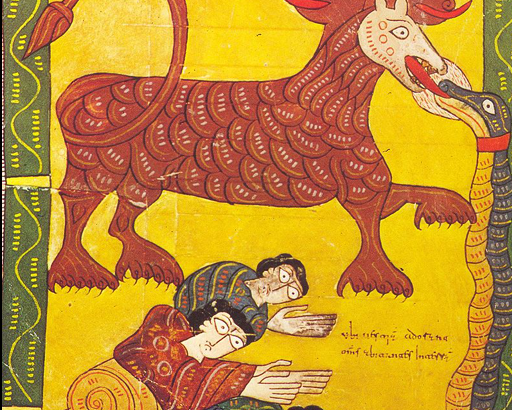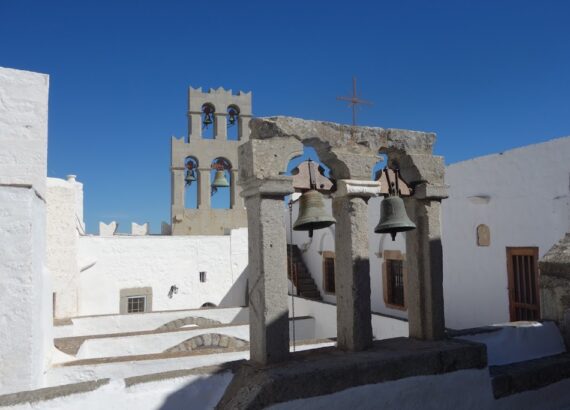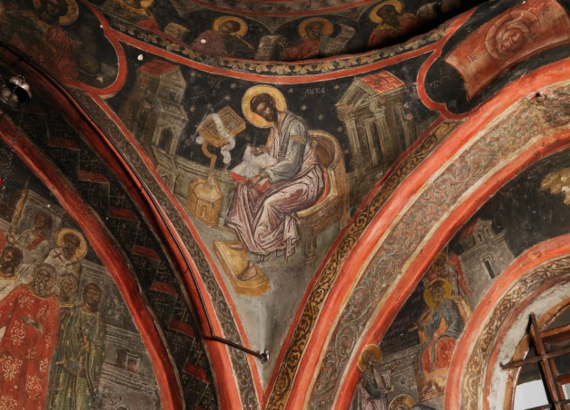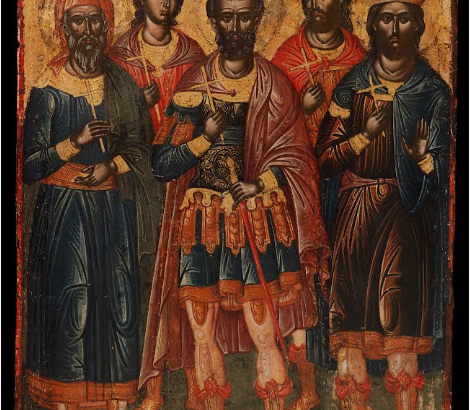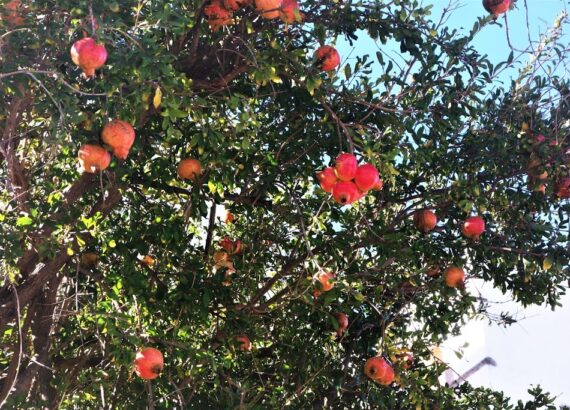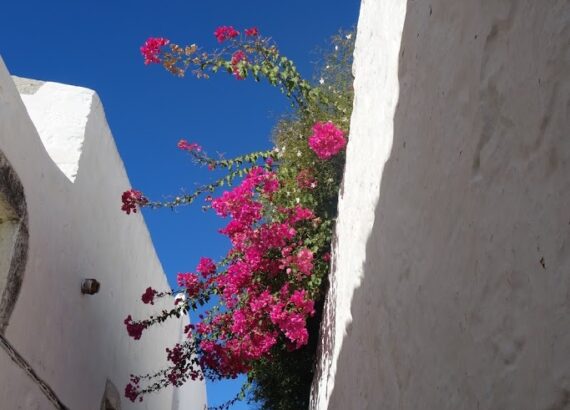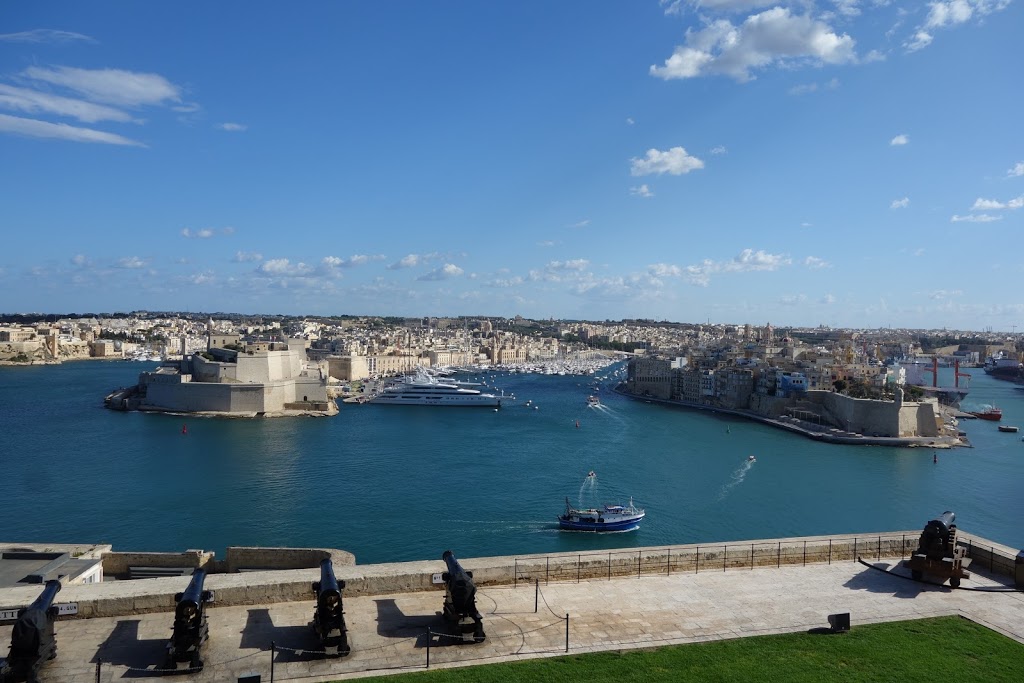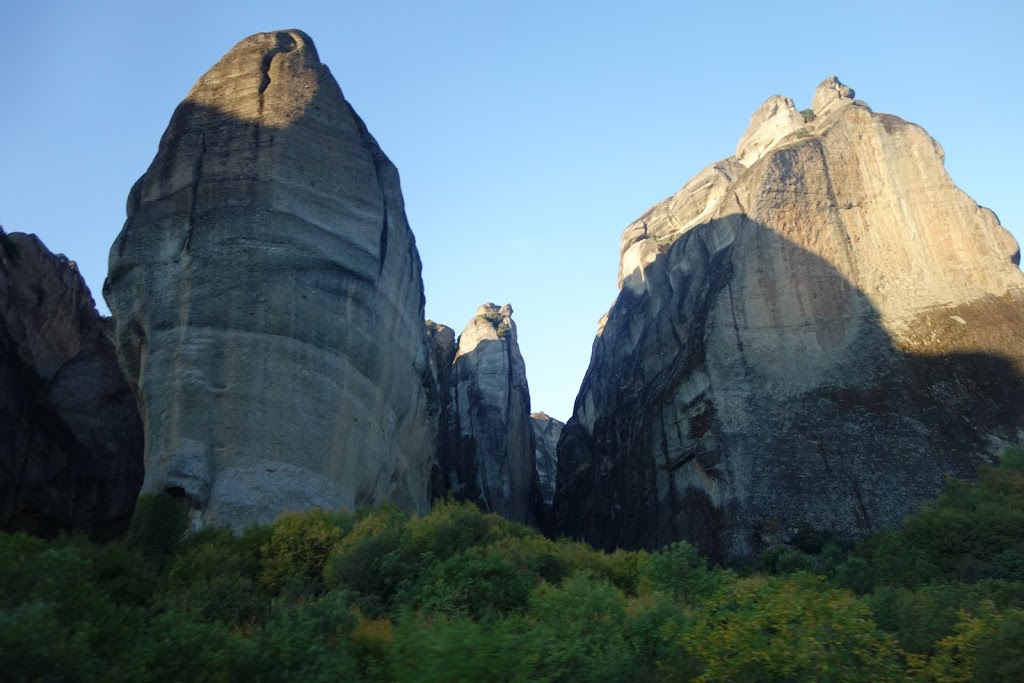PATMOS: The Island of the St. John
“Do you have a cigarette?” Ninety-three-year-old Mrs. Simandiris said in Italian after we’d climbed a shaded lane to her home for a taste of local life. The ancient woman, sitting in an arm chair surrounded by nick-knacks and an overflowing ashtray, presided over our visit, smiling and laughing while she showed our small group photos of her family, great-great grandchildren and all. In between cadging cigarettes, she asked people to take her photo for a euro.
I was particularly enchanted with an old family portrait placed under an oil lamp.
And an old mirror, the silvering gone.
Who was this family and what could their lives have been on this tiny island dominated by the Holy Monastery of Saint John? Of course, I’ll never know and must content myself visualizing our lively hostess having a breakfast of thick Greek yogurt, fragrant honey, coffee in a tiny cup half-filled with sludge, and the first cigarette of the day. Perhaps that’s why island Greeks are famous for their long lives.
There’s no dock other than that for the local ferry. A mustachioed man with leathery brown skin and a Greek fisherman’s cap steered the launch owned by the Port Authority to the inner harbor. We’d boarded a shuttle and wound up to the major town at the summit to meet Mrs. Simandiris before visiting the island’s two famous sacred sites. After we’d all said ciao and arrivederci to our hostess, it was time for more serious thoughts as we wandered down the narrow streets lined with shops, curtained windows, and old doors, one with a braceleted and ringed hand door knocker. Who lived there?
The first holy site was a cave just below the town of Chora where in AD 95, St. John dictated the last book of the Bible: The Book of Revelations.
Scholars are not exactly sure who John was. Some think he was the Disciple John, but most now believe he was a different person, frequently called John the Theologian or St. John the Divine. He’d been living in sophisticated Ephesus when he was hauled off to Rome to face accusations of prophesy. After he miraculously survived being boiled in oil and managed to convert all the on-lookers with the feat, he was banished to barren Patmos to get him out of the way.
Revelation is also known as The Apocalypsefrom its original Greek title. The word “apocalypse,” literally “revealing,”has come to be associated with cataclysmic disaster, judgment day or the end of the world, and is of course famous in books, film, and commentary about current world affairs, the stock market, and the weather.
It seemed to me to have little relevance to life on this idyllic island on the day I was there, but the island’s history like most of the Middle East has been painful over the millenia.
Whatever the intent of the author, he apparently lived in a cave open to the weather for a year dictating his work to a scribe. Fortunately, the persecuting emperor, Domitian, was assassinated and John returned to Ephesus where he faded from history. His writings remain.
After the Edict of Constantine, establishing Christianity in the 4th century, the cave became a place of pilgrimage.
Probably no different from the past, we joined long lines of day-trippers standing next to white walls cut with sharp shadows.
When our turn came we filed in for a minute or so to look at the icons, touch the walls, and wonder about the past before returning to the sunshine. But as in pagan Delphi, the constant tramp of footsteps detracted from our consideration of the tenor of John’s times and the meaning of Revelations and its message for today.
The museum is a treasure trove of ancient codices, documents, illuminated manuscripts and early printing. The most astounding to my mind is the Purple Codex, the section owned by the monastery composed of 33 leaves of parchment dyed purple, the color of emperors. Dating to the 6th century, it is an extract from the Gospel of Mark written in gold Greek capital letters all run together. Other marvels fill the rooms, including an icon by know to us as El Greco, later famous for his dramatic elongated figures now seen in the Prado Museum in Madrid where he lived after leaving Greece. Other treasures on display are jewelry and church furnishings, but it was the fragment of the New Testament that moved me the most. I couldn’t help thinking if it wasn’t for these monasteries even more would have been lost to us and we would be much the poorer in spirit and knowledge than we are.
Still contemplating the religious aspects of the island we found our way down to the tiny port following lanes lined with more shops, white houses with pots of purple Greek basil on doorsteps, laden pomegranate trees, and views of the sea around every turn.
The café, shaded by a gigantic fig tree was buzzing with locals and a few stray tourists. We joined them for an iced coffee before strolling by the few shops with their stylish linen summer clothes still hanging on racks stirred by a faint breeze.
But it was mid-October and life was slowing. Mrs. Simandiris was probably contemplating her winter cigarette supply, and we needed to return to our ship.
Illustration from Medieval Book of Revelations are from Wikipedia commons
Interior photos and artwork in The Holy Monastery of St. John are from Google Cultural Institute

